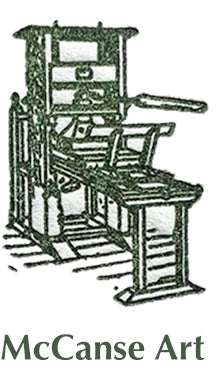Eva Therasa Bradshaw
Eva Therasa Bradshaw (1871-1938), RCA, was born in London, Ontario, where she was raised on a farm by her adoptive parents, John and Marion Bradshaw. When Bradshaw was still a child, her family moved to an apartment east of Waterloo on Dufferin Avenue, where she would live for most of her life. Bradshaw was initially trained to be a nurse, and did not begin to paint seriously until she reached 30.

Bradshaw became acquainted with the prominent female painters in her area, such as Florence Carlyle. Bradshaw began studying under Carlyle, painting mostly florals. She later took up portraiture, though Bradshaw disliked the creative limitations of commission. In 1902, she began exhibiting with the Royal Canadian Academy of Art (RCA).
In following years, Bradshaw visited Paris and New York with fellow painter Dorothy Seely-Smith, where the two visited exhibitions. In New York, Bradshaw studied figure-painting under Robert Henri; though her tutelage with Henri was brief, she was said to have been significantly impacted by his teachings. Bradshaw briefly found work in Rochester painting decals for furniture, but didn’t enjoy painting for production instead of quality, and quickly returned to London.
Soon after her return to Canada, Bradshaw’s mother passed away and Bradshaw began searching for a studio. She initially found a space at 514 Dundas Street West, though she continuously moved around downtown London as she found superior spaces. During this time, Bradshaw became a member of the Western Art League and would serve as their treasurer for several years.
In 1924, Bradshaw’s painting Plums, her most ambitious figure-painting, was exhibited in the Canadian art section of the British Empire Exhibition in Wembley, England. Despite her developing reputation as an important Canadian painter, Bradshaw was a sparing woman, who chose to live a humble life; referred to by her peers as ‘Poor Miss Bradshaw,’ she was known to wear the same gown time and time again, and her winter coat had many holes in the pockets. Bradshaw preferred to spend her money on art supplies and sitters, many of whom were poor local families. Bradshaw apparently lived without a blanket for her bed and primarily ate toast and fruit for meals. While Bradshaw had a strong reputation, she scarcely exhibited, as she rarely felt satisfied with her work.
Later in her life, Bradshaw began teaching at H.B. Beal Technical and Vocational High School. She also took up commissions around London, including for the London Public Library. In 1938, at 67, Bradshaw died in London after suffering from a long illness. Bradshaw is remembered as one of Canada’s finest painters, both for her florals and her figure-paintings, which often depicted children and mothers in domestic scenes. Her work is held by the London Art Gallery and private owners.
Her work is held by the London Art Gallery and private owners.
Sources:
Clare Bice. “Exhibit of Painting by the Late Eva Bradshaw.” Williams Memorial Gallery, March 1941.
Clare Bice. “Eva Bradshaw.” London Public Library and Art Museum.
Harriet Ann Boomer. “HERstory.” The London Free Press, 29 Oct. 1993.
Lenore Crawford. “Eva Bradshaw’s Many Gifts.” The London Free Press, 11 Sept. 1965.
Lenore Crawford. “Eva Bradshaw Works on Display at Gallery.” The London Free Press, 5 Feb. 1970.
